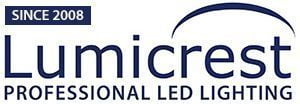Often we hear people say that they are using “daylight” bulbs to light their studio workspaces because they want to see the colours accurately.
Unfortunately, this is generally a mistake, resulting from a simple misunderstanding of the terminology. Everyone knows that sunlight is a full-spectrum light source. We’ve all been taught than when looking at paint samples in a hardware store, it’s a good idea to take them outdoors to see the true color of the swatch. Or if you’re buying clothes, you might want to look at them under natural daylight.
So why are typical “daylight” bulbs a bad idea? Don’t we want a light source that’s as much like the sun as possible?
The short answer is yes, you DO want bulbs that provide full spectrum lighting, as the sun does. However, that’s not what “daylight” bulbs do!
The term “daylight” relates to the “colour temperature” of the light. That is, whether it’s a “warm-colour” or a “cool-colour” light.
“Warm” light mean yellowish light, and “cool” light means light that has more blue content. Incandescent light bulbs give off “warm light” that’s rather yellowish. Yes, those bulbs are also very HOT, but that’s not why it’s called warm light.
Sunlight has much more blue content, so it’s considered a “cool” colored light source (even though sunlight can be pretty hot too!)
So what’s the problem?
Your typical “daylight” bulb does have lots of blue spectrum, like the sun. BUT it doesn’t have enough red spectrum. Natural sunlight has both.
And what’s more, if you are using a fluorescent bulb as your “daylight” source, not only are you missing out on red spectrum, you’re missing a lot more too. Fluorescent lights are notorious for having many peaks and valleys in their light spectrum. Each one of those valleys is a weak spot in the spectrum. That’s bad.
Why?
Because all the colour you see is actually just reflected light! Grass looks green because it reflects the green spectrum of light. Its not really a green colour, it’s a green reflector.
And we’ve all been taught that black objects absorb light. Which is true … but it’s more accurate and useful to realize that objects look black because they absorb light. If it reflected some or all of the spectrum, it wouldn’t be black!
So “daylight” bulbs usually give you the bluish cast of sunlight, at the expense of the rest of the spectrum, which is vital. You can’t see paint colors properly (or clothing, furniture etc) if those colour are not fully present in your light source.
Take a green ball and shine a red light on it. What do you see? A red ball? No, it’s impossible. The red light is absorbed by the green ball. Instead you see a grey ball! That’s an extreme example of what happens when your light source doesn’t have the spectrum required to render colours accurately.
And if you are an artist trying to paint under a deficient light source, you might as well be working blind, because you really won’t be able to see what you are doing properly. Unless of course, all your works are only blue, then you might manage. But for the rest of us, a good full spectrum light source is the way to go.
The warmness / coolness of the light source is called the “colour temperature” or CCT. That’s what “daylight” is all about. It means it’s a “cool” light.
The spectral accuracy of the light source is something different. Its measured by the “colour rendering index” or CRI. With LEDs you can get full spectrum lights in virtually any colour temperature, including daylight. But most of the time, you don’t.
Most LED manufacturers sacrifice some colour rendering accuracy in order to make their lights brighter and more efficient. Sometimes that’s ok, and sometimes it’s not.
Lighting artwork is definitely one of those times when it’s not OK to sacrifice light quality!
In case it’s not obvious yet, at Lumicrest we specialize in full spectrum, High CRI LED lighting.
